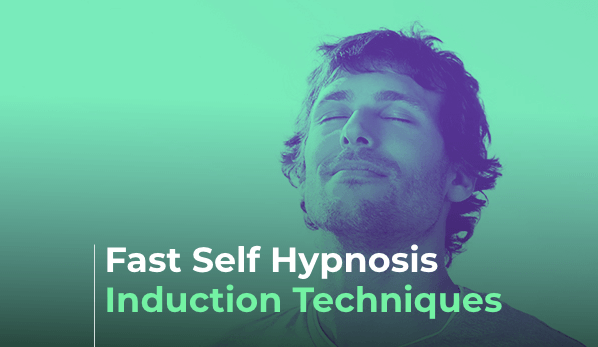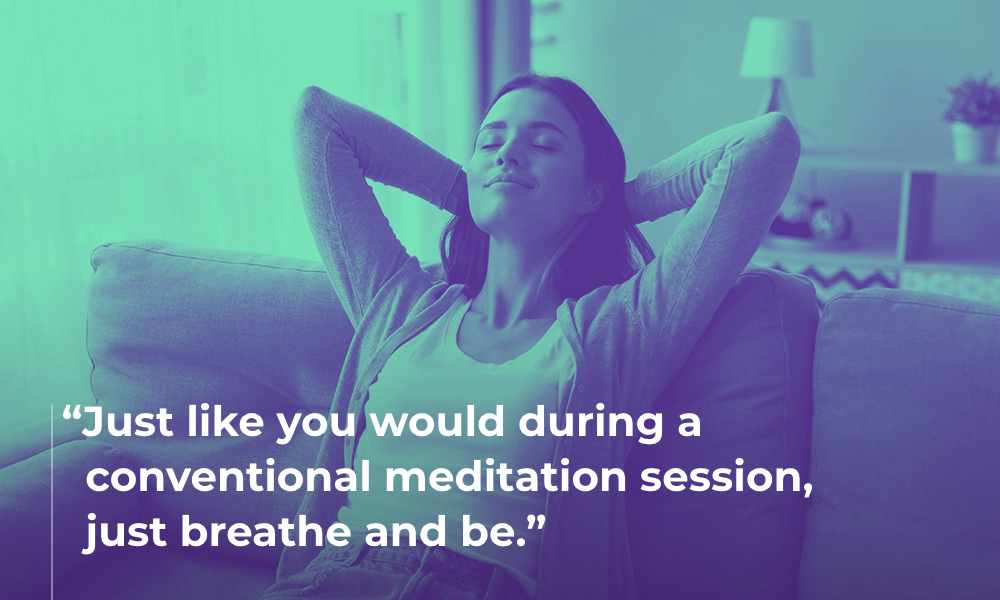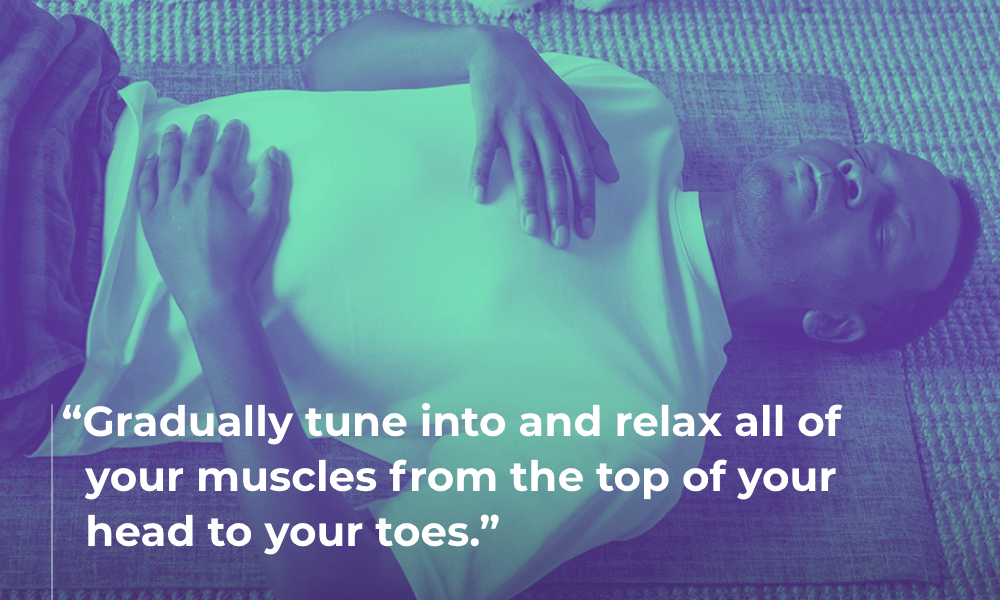Hypnosis is effective for a variety of everyday life situations—from addressing chronic pain and cultivating focus at work to overcoming phobias and recovering from a surgery. It’s a powerful way to create positive change in your life. You can use hypnosis alone, or you can use it as a complement to other mental health practices like psychotherapy.
Luckily, you don’t need to go into a hypnotist’s or hypnotherapist’s office to reap the benefits of hypnosis. Instead, you can achieve the same results at home through self hypnosis!
In fact, whether you’re getting assistance from a trained hypnotist, using a guided hypnosis app, or doing it yourself all together, all hypnosis is self hypnosis. You’re the only one who can create the state of hypnosis in your mind, all that differs is the level of assistance you have in getting there.
While pure self hypnosis may be more difficult than other approaches, , there are a variety of different ways you can achieve it. All of these methods are about tuning out the external world and tuning into your own consciousness using focus, awareness, and some bodily sensations. In this article, we give you several self-hypnosis induction techniques you can use to begin hypnotizing yourself. Let’s start by taking a look at how to prepare for hypnotic induction.
How To Prepare For Self Hypnosis Induction
The first phase of self hypnosis is the induction phase. This is when you put yourself into a hypnotic trance. In this phase, you bypass the conscious part of your brain and sink into a trance-like state where you can access your subconscious mind (which some refer to as the “unconscious mind”). It’s here that you’re able to make lasting changes to your behavior and thought patterns. To set up for the fastest self hypnosis induction, follow these tips:
Choose a Good Time
Choose a time of day when you’re the least likely to be disturbed. To make hypnosis a regular practice, consider doing it at the same time and in the same place every day. This will help your mind and body develop a habit, which will allow you to induce a hypnotic trance more quickly.
Pick the Right Place
Just like you might do for a meditation session, self hypnosis requires you to “set the scene” for a calm and mindful hypnosis practice. So, choose a quiet location for your hypnosis. Turn off any technology you don’t need for the session, and remove all other distractions. You may want to ask anyone nearby to keep quiet during your session. (Or, if you can, do your session where there are no other people.) Sit or lie down in an alert, but comfortable position.
Have a Clear Goal
Self-hypnosis methods require more than using the correct hypnosis techniques; they also require you to be in the right frame of mind. Before you begin your self-hypnosis session, start by ensuring you have a clear goal. For example, are you practicing hypnosis to improve your confidence or to help mitigate a fear? Setting a goal will help you get the most out of your hypnosis session.
Additionally, consider setting a goal for how you want to feel immediately after the session is over. You may also set one for how to feel if you’re unexpectedly interrupted during your hypnosis session. (For example, you may set an intention that if your child interrupts you, you’ll come out of the session feeling calm and clear headed.)
Breathe and Begin
Once you’ve determined your goal for your hypnosis session, the final step is to breathe. Just like you would during a conventional meditation session, just breathe and be. If distracting thoughts and emotions arise, acknowledge them and then try your best to release them. You may also want to perform several long, slow inhalations and exhalations before you begin. These breaths help to center yourself in the present moment. And finally, set a time limit for your hypnosis session. Once you’ve done these things, you’re ready to try some techniques that help you sink into a hypnotic trance state.
Self Hypnosis Induction Techniques
The purpose of these induction exercises is to help you bypass the conscious part of your mind and access your subconscious. Once you access your subconscious, you’re in a state of heightened suggestibility. In other words, you’re more able to receive and internalize hypnotic suggestions that help you reach your goals.
Self hypnosis induction is a skill. And like every other skill, it needs to be learned. Know that there’s no such thing as “instant induction.” Rapid induction happens with practice. You can achieve faster self hypnosis induction by improving your sense of awareness and focus. Remember that it’s okay if these techniques don’t work perfectly for you at first. The key is to release expectations rather than cling to them.
There are many ways that you can induce self hypnosis. Some techniques will likely work better for you than others. Plus, which technique works best for you may vary depending on the day. So experiment, see what is most effective for you, and don’t feel like you need to stick with the same technique for every self-hypnosis session.
Quick Self Hypnosis Inductions
First, a disclaimer: We don’t recommend that you do hypnosis in a hurry. It’s better that you wait until you can take your time to properly clear your mind and sink into your session. If you don’t do that, you may not get the results you’re looking for. That said, if you are looking to induce hypnosis quickly, here are some techniques that can help:
The 3-2-1 Technique
Self hypnosis induction is all about bringing yourself into the present moment and focusing your energy, so it makes sense to begin by getting in tune with your senses. In the past, you may have done some variation of the 3-2-1 technique (also known as the Betty Erickson 3-2-1 technique) to calm down or center yourself.
Here’s how to do it:
- 3 – Become aware of your external surroundings and note three things you can see, three things you can hear, and three things you can feel.
- 2 – Start again, this time note two things you can see, hear, and feel.
- 1 – Start over again, this time note just one thing you can see, hear, and feel.
After you’ve completed the first part of the exercise, close your eyes to prepare for the second:
- 3 – Become aware of your internal mind, and note three things you can see, hear, and feel. If this feels like an abstract concept, that’s okay. Just try it and see what arises.
- 2 – Repeat the process, this time note two things you see, hear, and feel.
- 1 – Do it one more time and note one thing you can see, hear, and feel.
Focus On the Energy Between Your Hands
To do this rapid self hypnosis induction technique, rub your hands together to create friction, then focus on the feeling of heat and energy between your palms. Move your hands away from each other, then closer together until you reach the spot where your hands feel “magnetized” to one another. Focus on this sensation with your conscious mind and allow your subconscious mind to take over, leading you to a hypnotic state.
Focused Breathing
Another fast self-hypnosis technique has to do with your breath. Focusing on your breath helps concentrate your focus, center yourself in the present moment, and strengthen your mindfulness skills—all of which prepare you for hypnosis. The key to this exercise is to focus all of your attention on one part of your body that moves when you take deep breaths. For example, your rib cage or your nostrils. The smaller the body part that you focus on, the more challenging this exercise will be. So you may want to start by focusing on the pronounced rise and fall of your chest before progressing to the gentle flare of your nostrils.
Look up at Your Forehead
One key for relaxing your mind into a hypnotic trance is to relax your body. A shortcut way to do that? Make your eyes feel tired. In order to make your eyes feel sleepy, try looking up at your forehead. Keep your chin parallel to the ground and only use your eyes to look up. The physical strain can (harmlessly) fatigue your eye muscles. This temporary eye strain makes you feel tired, causing you to quickly feel relaxed.
Deep Self Hypnosis Inductions
The fastest self hypnosis induction may not be the best if you want to have a deep hypnosis session. When you’re ready to enter into a deep trance, try one of these deep self hypnosis inductions.
Room Visualization
To do this one, start by visualizing (aka imagining) a room you’re familiar with. After you have a detailed image of this room in your head, move on to visualizing a room that you are not familiar with. This is a great way to induce a sense of calm and occupy your conscious mind, so you can reach the subconscious. For variations of this technique, you can try describing a room you’re envisioning out loud. Or, you can imagine yourself walking through the room and then through the rest of the building or house.
Count Your Breaths
This induction technique helps you develop the skill of letting go of distracting thoughts. When you master this skill, you’re able to quickly induce yourself into a hypnotic trance. To do this technique, close your eyes and begin counting each inhale and exhale. Focus all of your attention on counting. When a thought inevitably distracts you, simply acknowledge and release it. Then begin counting again from one. Over time, as you count higher and higher without a distraction, you will improve your ability to focus and release unhelpful thoughts.
Heavy Arms
Somewhat like the eye trick, this technique is another way to guide your body into a relaxed state of mind. Start by holding your arm out in front of you. Then, begin to imagine your arm getting slightly heavier with each second that passes. Allow the heaviness to cause your arm to slowly and gently drop into your lap. As your arm gets heavier and begins to let go of tension, the rest of your body will, too. And chances are, your mind will follow suit.
Progressive Muscle Relaxation
You may have tried progressive muscle relaxation (also called simply “progressive relaxation”) before—perhaps during a guided meditation session. This technique also works well for entering a hypnotic trance. In order to do progressive muscle relaxation, begin by directing your attention to your forehead. After you’ve noted (and accepted) any sensations that arise in your forehead, relax your forehead muscles. Then, move to the muscles around your eyes—notice any sensations that arise, and then relax your eye muscles. Gradually tune into and relax all of your muscles from the top of your head to your toes. (Or you can work your way from the bottom of your body to the top, if you’d like.)
Rapid Self Hypnosis Induction with Primed Mind
When you’re doing a self-hypnosis session, it’s best to use an audio guide that can lead you through each phase of the hypnotic process. If you attempt self-hypnosis techniques without a guide, chances are that (at least at first), you’ll have to pause to read instructions. This disrupts the continuity of your hypnosis session and may make it less effective. Plus, when you’re using a guided app, the app does all of the induction work for you, so you can focus on having your best hypnosis session yet.
Primed Mind is a guided self-hypnosis audio app developed by one of the world’s leading mindset coaches to help everyone access the power of hypnosis at home. It’s free to download and has an easily-navigable dashboard full of hypnotic primers that are tailor-made to help you achieve your goals. Whether you want to let go of stress, improve your habits, sleep better, improve your communication, or something else entirely, there’s a hypnotic primer made for just that.
Just like an in-person hypnosis session, Primed Mind effectively leads you through every stage of the hypnotic process, so you get the full hypnotic experience at home. And because it’s so much more cost-effective than in-office hypnotherapy, you can do it much more often, improving your results. Try Primed Mind for free today. Whether it’s your first time getting hypnotized or your fiftieth, Primed Mind can help you start performing at your best.




